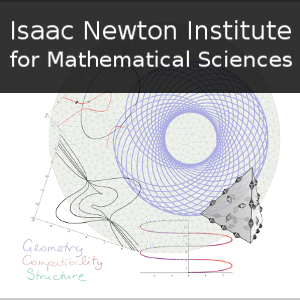Tetrad methods in numerical relativity
1 hour 8 mins,
125.31 MB,
MP3
44100 Hz,
251.6 kbits/sec
Share this media item:
Embed this media item:
Embed this media item:
About this item

| Description: |
Garfinkle, D
Friday 4th October 2019 - 16:00 to 17:00 |
|---|
| Created: | 2019-10-04 17:15 |
|---|---|
| Collection: | Geometry, compatibility and structure preservation in computational differential equations |
| Publisher: | Isaac Newton Institute |
| Copyright: | Garfinkle, D |
| Language: | eng (English) |
| Distribution: |
World
|
| Explicit content: | No |
| Aspect Ratio: | 16:9 |
| Screencast: | No |
| Bumper: | UCS Default |
| Trailer: | UCS Default |
| Abstract: | Most numerical relativity simulations use the usual coordinate methods to put the Einstein field equations in the form of partial differential equations (PDE), which are then handled using more or less standard numerical PDE methods, such as finite differences. However, there are some advantages to instead using a tetrad (orthonormal) basis rather than the usual coordinate basis. I will present the tetrad method and its numerical uses, particularly for simulating the approach to a spacetime singularity. I will end with open questions about which tetrad systems are suitable for numerical simulations. |
|---|---|
Available Formats
| Format | Quality | Bitrate | Size | |||
|---|---|---|---|---|---|---|
| MPEG-4 Video | 640x360 | 1.94 Mbits/sec | 994.42 MB | View | Download | |
| WebM | 640x360 | 404.34 kbits/sec | 201.38 MB | View | Download | |
| iPod Video | 480x270 | 525.43 kbits/sec | 261.69 MB | View | Download | |
| MP3 * | 44100 Hz | 251.6 kbits/sec | 125.31 MB | Listen | Download | |
| Auto | (Allows browser to choose a format it supports) | |||||

